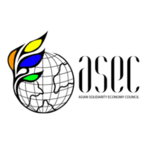Institute of Asian Study
https://www.instituteofasianstudies.com/
The IAS saw its modest beginning in 1982 at Tiruvanmiyur, a spiritual centre hallowed in the ancient literary and cultural traditions of Asia. Since then it has grown to become one of India's premier indological research and publication institutes.
The Cankam poems glorifying heroic deeds had a counterpart in the Kojiki anthology of Japan. The manyosu of that country echoed sentiments found in the love verses of the Cankam period. Institute of Asian Studies and include in its programme of work a comparative study of literature in addition to purely literary studies. It was evident to them that the interaction between the culture of South India and that of East Asian nations had contributed a great deal to the cohesion that characterizes the Asian ethos. The Institute of Asian Studies was conceived with the objective of strengthening the cultural ties between India and other nations of Asian.
The IAS logo symbolically representing the synthesis of two distinct cultures, the Indian and the Japanese is depicted by a traditional South Indian lamp along with of Japanese percussion instrument very similar to the Indian uTukkai drum (a small drum tapering in the middle). The sailing ship at centre represents the free exchange of ideas between geographically distinct cultures of Asia.

